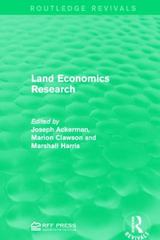Question
A population has two equal-sized members of healthy and unhealthy individuals.Members of each type have the same, identical, utility function: U = 20Y 0.5 Assume
A population has two equal-sized members of "healthy" and "unhealthy" individuals.Members of each type have the same, identical, utility function:
U = 20Y0.5
Assume each individual, in either group, has disposable income (after normal expenses) of $19,000 a year.If in need of major medical care (and does not have insurance), each individual will have $15,000 in medical expenses.A "healthy" individual has a 6% probability, while an "unhealthy" individual has a 18% probability, of requiring major medical care.
NOTE:An actuarially fair insurance premium (AFIP) is always calculated as:AFIP = (Medical expenses covered) x (Probability of occurring).
(a) Calculate the AFIP of the full-coverage policy for a "healthy" individual.
(b) Calculate the AFIP of the full-coverage policy for an "unhealthy" individual.
(c) Calculate the AFIP of a deductible policy for a "healthy" individual, for which the deductible is equal to $12,000.
(d) Calculate the AFIP of a deductible policy for an "unhealthy" individual, for which the deductible is equal to $12,000.
Suppose health status ("healthy" or "unhealthy") represents asymmetric information:Each individual knows her or his health status, but insurance companies do not.
Now, suppose an insurance company offers only two types of policies:1)a full-coverage policy with premium equal to the most expensive (regardless of insurance type) of the two full-coverage policies that you calculated above, and 2)a deductible policy with premium equal to the least expensive (regardless of insurance type) of the two deductible policies that you calculated above.
(e) Calculate expected utility for a "healthy" individual, for each scenario:
1. No Insurance
2. Most Expensive Full-Coverage Policy (OPTION #1)
3. Least Expensive Deductible Policy (OPTION #2)
(f) Calculate expected utility for an "unhealthy" individual, for each scenario:
1. No Insurance
2. Most Expensive Full-Coverage Policy (OPTION #1)
3. Least Expensive Deductible Policy (OPTION #2)
(g) Which option would a representative member of each group (i.e. "healthy" and "unhealthy") choose?
(h) Calculate the insurance company's expected economic profit from selling the desired policy (from the individual's perspective) to a member of each group.
1. Expected Profit from "Healthy":
2. Expected Profit from "Unhealthy":
Step by Step Solution
There are 3 Steps involved in it
Step: 1

Get Instant Access to Expert-Tailored Solutions
See step-by-step solutions with expert insights and AI powered tools for academic success
Step: 2

Step: 3

Ace Your Homework with AI
Get the answers you need in no time with our AI-driven, step-by-step assistance
Get Started


